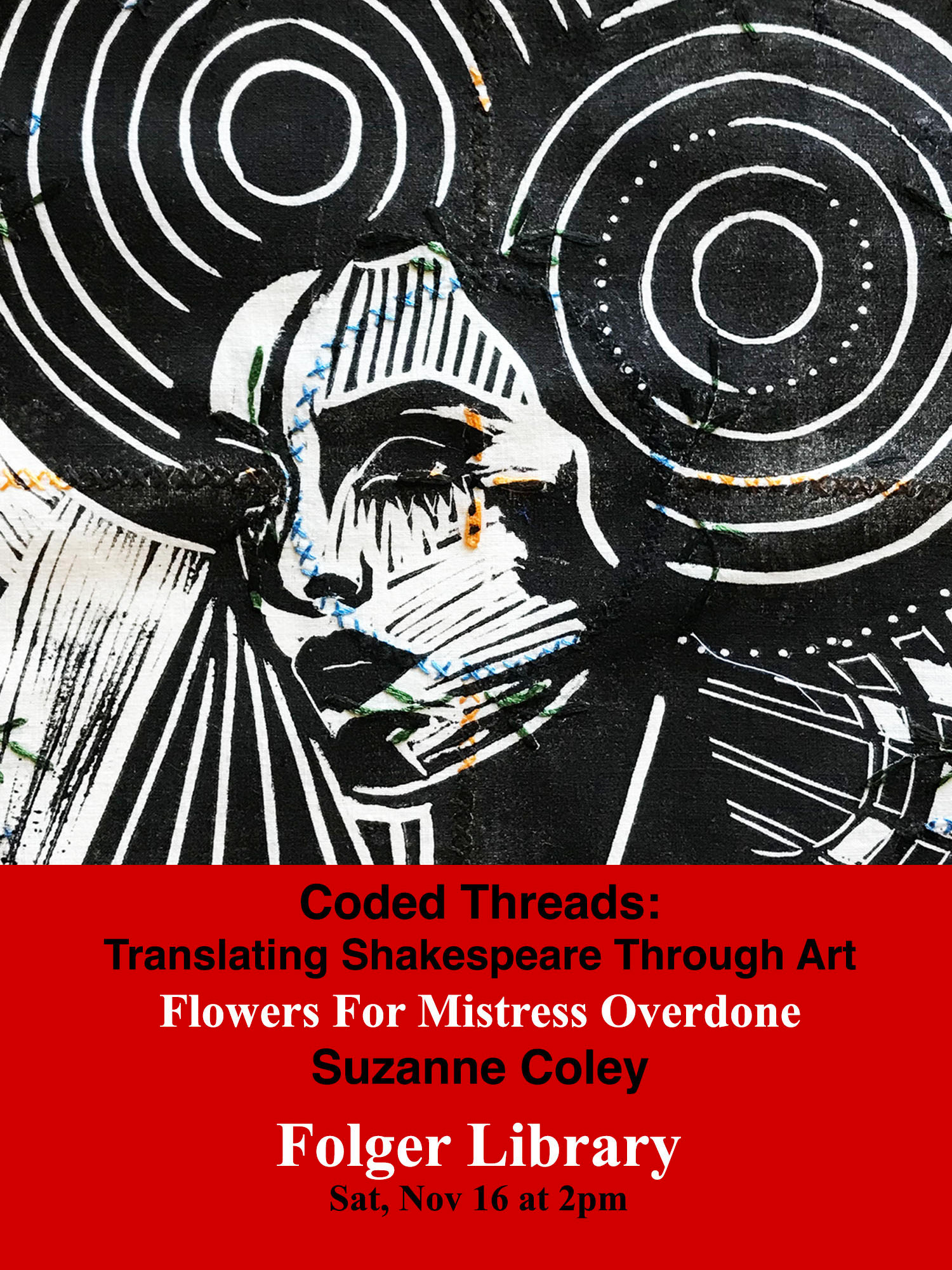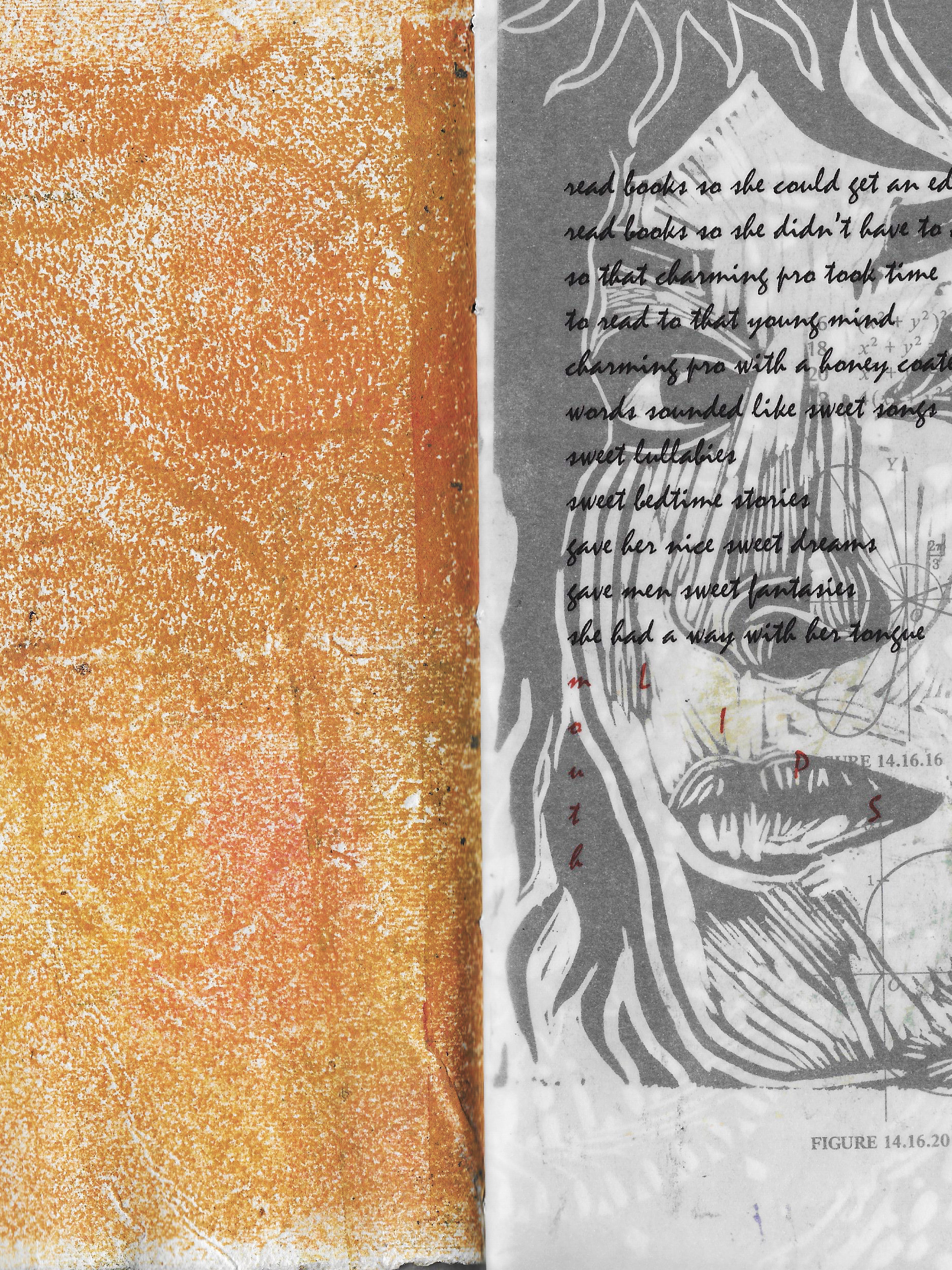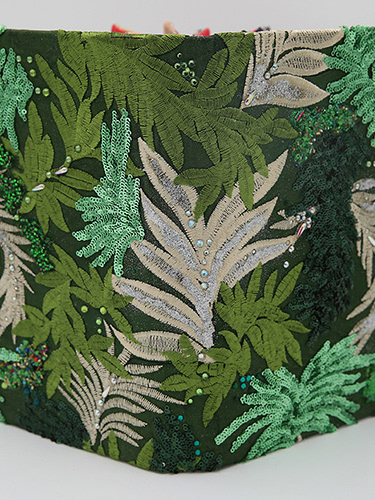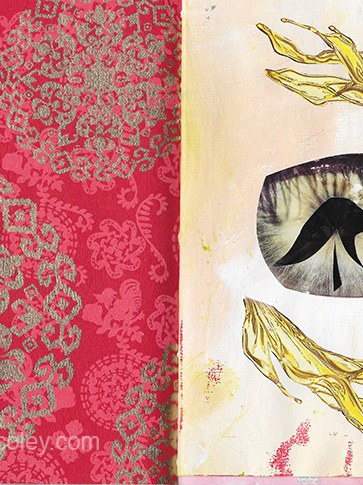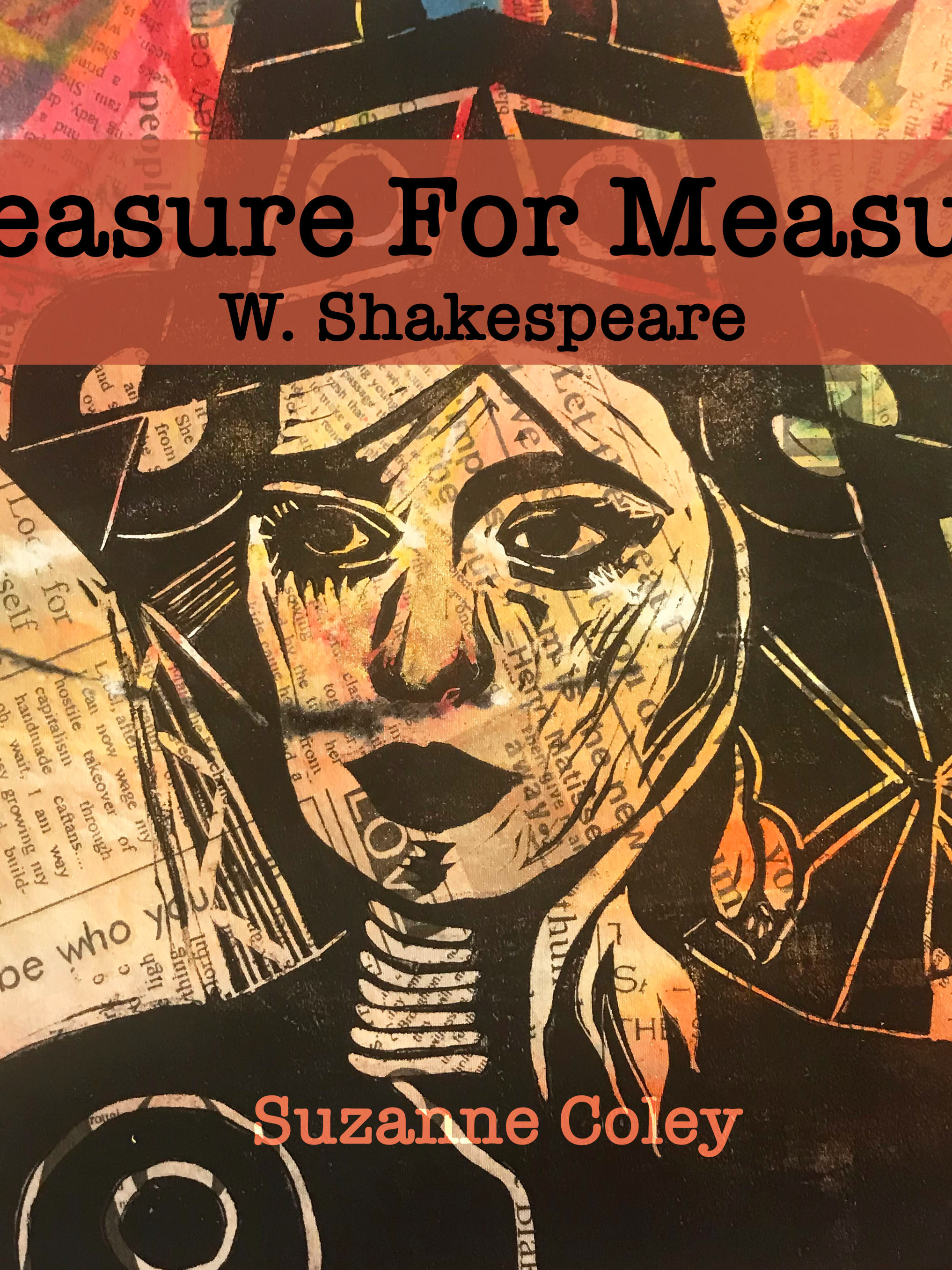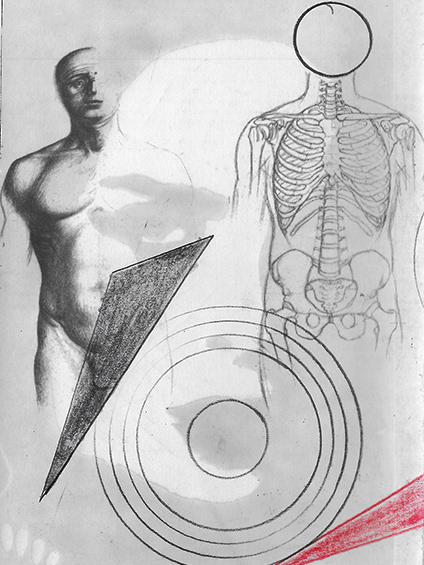"I created three embroidered books in response to Shakespeare's Sonnet 116, compelled by the poem's layered intricacies and understated complexities. This volume constitutes the second installment in the series. While Sonnet 116 is frequently read as a clear and declarative assertion, the process of translating its language into visual and material forms revealed a text of far greater interpretive density. Through drawing, stitching, and constructing the books, I encountered multiple strata of meaning. These strata are the subtleties, hesitations, and semantic shifts that often recede in conventional readings. However, they have a profound significance on how visual meaning is constructed. Working across three discrete volumes enabled me to trace these nuances both materially and visually. This allowed me to illuminate dimensions of the sonnet that are easily obscured by more straightforward interpretations.
"My books juxtapose the sumptuous refinement of hand-embroidered covers with interiors constructed from pieced fabrics, linocut imagery, and silkscreened text. This deliberate tension between cover and page stages conversations across centuries and traditions, situating Shakespeare's sonnets within a complex material framework.
"The interplay between my book's exterior and interior positions it as a space of productive contradiction and ongoing dialogue. The embroidered cover aligns with the European traditions of refinement and ornamentation, whereas the interior champions resourcefulness, innovation, and resilience characteristic of African American quilting practices.
"As the book unfolds, the reader performs a kind of Volta, echoing the structural turn of the sonnet. In Sonnet 116 the Volta is:
If this be error, and upon me proved,
I never writ, nor no man ever loved.
I never writ, nor no man ever loved.
This shift from a luxurious surface to a deeper engagement with the textures of memory, labor, and cultural inheritance.
"Reading together, my covers and pages assert that Shakespeare's sonnets are not static relics of the canon. They are living texts, capable of being re-stitched into new material contexts. My books unfold as both homage and critique, insisting that the canon can be simultaneously adorned and unsettled, bound in fine luxurious threads and stitched from fragments."
Suzanne Coley
